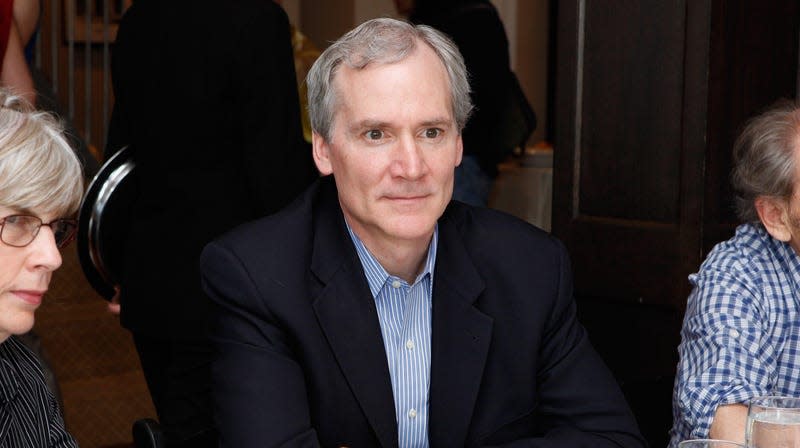Stanford President to Step Down Over Allegations He Manipulated Mountains of Science

Before joining Stanford, Marc Tessier-Lavigne worked at major biotech firms like Genentech and Regeneron.
The most preeminent member of one of the U.S.’s most preeminent universities plans to step down in a month’s time. The news out of Stanford comes after student journalists uncovered allegations that their dear leader’s old lab had manipulated data in dozens of major scientific papers published in many preeminent journals.
In a statement, Stanford University president Marc Tessier-Lavigne said he’d be stepping down effective Aug. 31 “for the good of the university.” The president will be stepping down nearly nine months after a freshman journalist at The Stanford Daily college newspaper reported Tessier-Lavigne’s old labs had been routinely manipulating data about neurobiology that was then published in journals such as Science, EMBO, and Nature.
Read more
On Wednesday, Stanford’s board of trustees shared its findings from a multi-month investigation of past scientific papers co-authored by Tessier-Lavigne. The nearly 100-page report on the research digs into 12 papers with Tessier-Lavigne’s stamp—five of which he was the principal author—all conducted before he came to Stanford. The report concluded that the Stanford president didn’t know about any data manipulation, and “was not reckless” in failing to identify all that data manipulation.
Still, the panel noted there were “serious flaws in the presentation of research data” for all 12 of the studies. The panel also refuted the claim first reported by the Daily that Tessier-Lavigne had covered up falsified data in a landmark 2009 Alzheimer’s study. That doesn’t mean that the paper didn’t have any problems, as the report noted it lacked the “rigor expected for a paper of such potential consequence.” That study and several other papers co-authored by the Stanford president were worthy of retraction.
“At various times when concerns with Dr. Tessier-Lavigne’s papers emerged… Tessier-Lavigne failed to decisively and forthrightly correct mistakes in the scientific record,” the panel concluded.
The statements equate to one of the biggest scientific malpractice cases in years, and from a major figure in the scientific and biotechnology community, no less. Tessier-Lavigne blamed “others in my lab” for the research data manipulation but again claimed he was “unaware of these issues.” He went on to say, “I agree that in some instances I should have been more diligent when seeking corrections, and I regret that I was not.”
The original questions surrounding Tessier-Lavigne’s data were first published on crowdsourcing science site PubPeer. Then the Stanford Daily kicked off a storm of reporting on their president and his unsound science. One of the original reports noted that the soon-to-be-ex Stanford President had been involved in multiple major biotechnology labs before taking the academic chair in 2016. This included seven-figure salary researcher roles at major biotech companies like Genentech (where he helped write the oft-cited 2009 Alzheimer’s study) and Regeneron (the drugmaker recently famous for its monoclonal antibody drugs used during the pandemic). The Daily’s report noted concerns from major science misconduct investigator Elisabeth Bik.
Some data in the panels in the scientific papers were copied outright from another panel. Other data points were copied and flipped around. One oft-cited 2001 study where Tessier-Lavigne was the lead author included photoshopped data points, according to Bik as cited in the Daily’s original report. Tessier-Lavigne said he would be working to retract three and correct two more of his papers.
Academic publishers rely so much on pedigree, most are unwilling to review papers after they’ve been published—let alone retract them—especially if it’s by prominent figures in the scientific community. While the allegations against Tessier-Lavigne don’t reach the levels of famed fraudsters like former Bell Labs researcher Jan Hendrik Schön who was cited for misconduct in more than a dozen cases, there is a a certain rhyme to the allegations. In the end, most alleged fraud involves manually futzing with data points. For how simple that manipulation may seem, the only main difference between alleged fraudsters is how long fame manages to shield them.
More from Gizmodo
Sign up for Gizmodo's Newsletter. For the latest news, Facebook, Twitter and Instagram.

